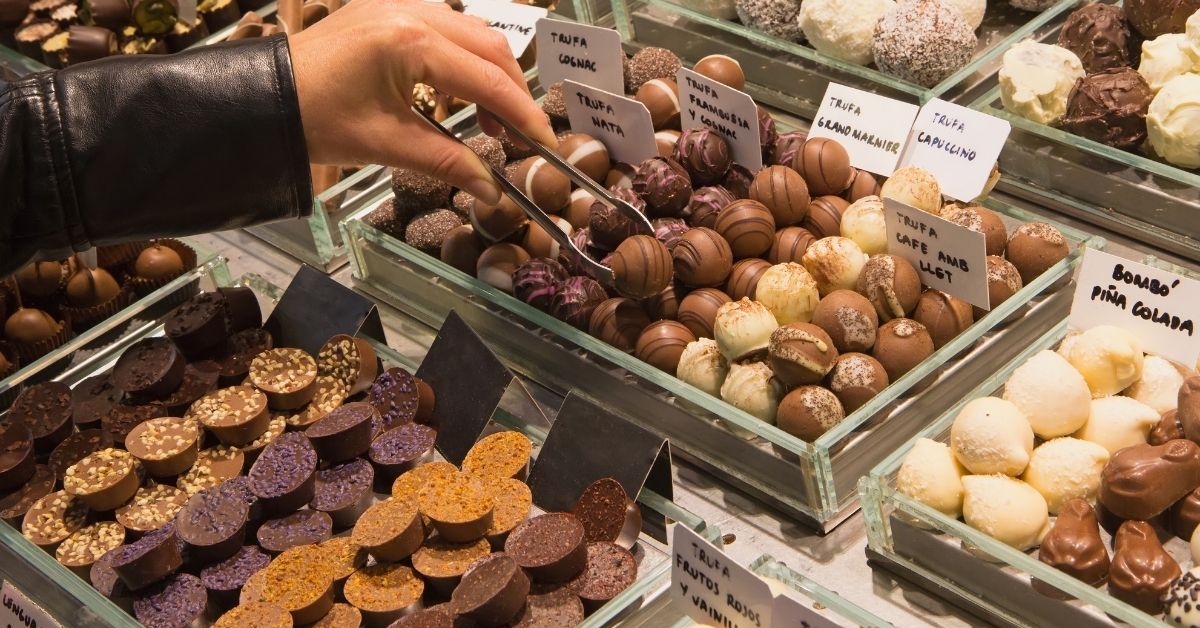How Much Do Various Chocolates Cost Per Pound?

Chocolate is one of the leading confection foods across the globe. However, chocolate prices have fluctuated at different points in history. Most consumers are largely unaware of the price changes because chocolate is usually an impulse buying to satisfy an immediate sweet tooth craving. So, how much do chocolates cost per pound?
A pound of fine chocolate can run as high as $30 to $120 per pound. But for ordinary chocolate, you can expect to buy it at around $5 to $10 per pound. Of course, if the chocolate has additional occasion packaging, you will have to pay an extra 10% to the ordinary price.
For those with a sweet tooth, find out the prices of your favorite chocolate bars and how you can price chocolate in this post.
Chocolate Prices Per Pound
| Chocolate Category | Price Per Pound |
|---|---|
| Dark chocolate | $6.50-$15.00 |
| Milk chocolate | $4.00- $14.00 |
| White chocolate | $5.00-$13.00 |
Note that the retail prices could be on the higher side. However, you don’t have to pay retail; you can buy wholesale in bulk, on sale or use coupons.
What Is the Average Cost of Chocolate?
One of the most enjoyed treats globally; chocolate bars come in various sizes, shapes, colors, and prices. Typically, the average cost of chocolate is $5 per pound.
However, as chocolate-making becomes more of an art, expensive chocolate is increasingly gaining popularity. Hence, you can find some chocolate prices set at $20 to $120 per pound. Most of these decadent chocolate bars are made of the highest quality chocolate, sourced ethically, and are handmade.
What Factors Affect the Price of Chocolates?
The cost of raw materials, including cacao seeds, milk, and sugar, can determine the price of chocolates. This is because the materials will need to be processed before being used in the chocolate-making process. Besides, you should consider the cost of labor used to manufacture the chocolate.
Once processed, chocolates need to be packaged and distributed to end shops for sale. There’s also a fraction of the cost that goes to advertising the chocolate.
How Do You Price Chocolate?
You can price chocolate based on the cost structure. You’ll need to accurately account for all the production costs and add a mark-up to set the price. This pricing strategy tends to ignore demand trends and competition.
You could also price chocolate depending on what you think the consumer is prepared to pay. Besides, chocolate prices can be set based on what competition charges or set low to enter a competitive market and raise it later.
Moreover, you can set chocolate prices very high to take advantage of some consumers’ desire for a new design or product at any cost.
What Is the Difference Between Expensive and Cheap Chocolates?
Expensive chocolates tend to have more cacao content. Cacao solids offer the well-known taste of chocolate. Some dark chocolates contain a minimum of 75% of cacao solids, making them taste finer and more expensive than others. Note that the longer the cacao is crushed and processed, the smoother the chocolate will turn out to be.
Expensive chocolates have more cocoa butter, which gives them a more refined texture. However, due to its increased demand in the cosmetic industry, cocoa butter prices have shot up. Hence, some cheaper chocolate manufacturers substitute cocoa butter with oils degrading the quality of the bar.
Cheaper chocolates have more sugar. Some manufacturers add lots of sugar to the chocolate to increase its mass. Consequently, the chocolate loses its original taste and creaminess and becomes sweeter and coarser.
Why Are Chocolate Prices Soaring?
The chocolate price increase is being driven by the soaring cost of cacao beans that rose by at least 18 percent by the end of 2020. Poor yields from major cocoa producers (West Africa and Southern America) have a limited supply of beans.
Moreover, the rising cost of sugar means that it will now cost more to make chocolate and sweet treats.
How Do Some Manufacturers Manage to Keep Chocolate Prices Low?
Large chocolate manufacturers use various emulsifiers to keep the prices of the product low. Some alternatives are cheaper than cocoa powder and cocoa butter and are used to substitute many candies or chocolate bars to give a smooth texture with a low impact on finances.
